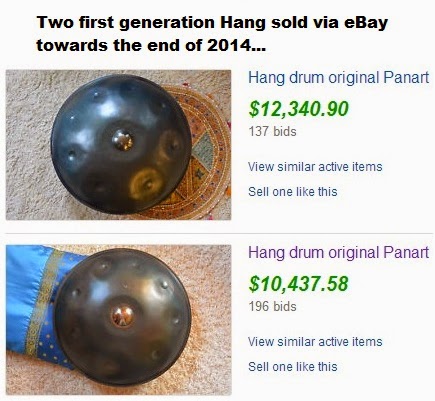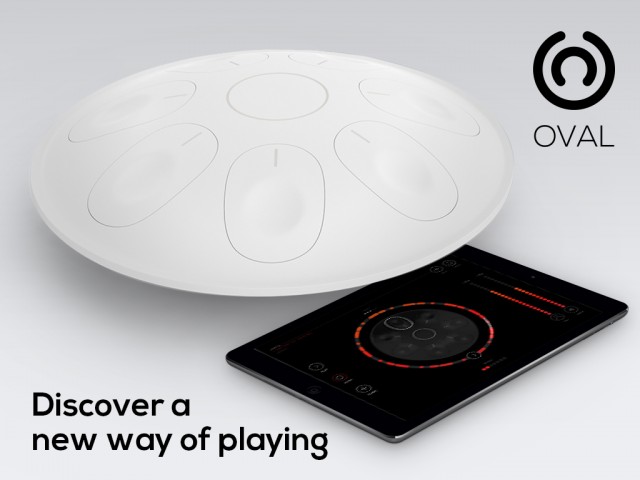In recent times, there has been a huge amount of negativity sweeping through the world of HandPan. We see some, happy to openly call out instruments such as the Bali Steel Pan, as sounding like: ‘out of tune trash can lids’, while others instead, use their Bali’s, to produce beautiful music. Some, brazenly describe HandPan like the Innersound, as being ‘Junk’. While others instead, choose to show off exactly what these instruments are capable of, under gifted hands.
And so it is that in this post, I decided to revisit the earlier days of HandPan, and a time when the first HandPan, following the invention of the Hang, were beginning to appear. A time that looking back now, could be categorised as a time of open untainted minds, and hearts, in comparison, to the prevailing moods of the current climate.
One of the first HandPan to hit the market, following in the wake of the Hang, was the Caisa. An instrument that these days receives very little love, within the HandPan community. However, one of my personal favourite HandPan reviews, ever put together, is the following Caisa review, by HandPan ambassador, turned maker of very sweet sounding pans of his own, Colin Foulke. And it goes a little something like this:
‘I am fortunate enough to have been loaned a Caisa by one of our lovely Forum members! I have been playing it for a couple days now and felt that I would give it a little review. Before I do though I would like to state that I think the Caisa is a GREAT instrument. It has many of the great handpan characteristics and is a joy to play. --- Overall, the Caisa is a great instrument and its great to play. It no doubt has the ability to move people and really captivate an audience. Although it will never be a Hang, it absolutely stands on its own two feet as a fantastic instrument and as a proud member of the Handpan family.’
You can read the full review:HERE.
To which we can add the words of Eric Muller (who I believe is currently working at Aura HandPan):
‘So yesterday i got out of school early because i had my senior prom. i called my brother to meet me to get a bite to eat he was a bit late so i waited in the restaurant. when he arrived he had this massive box in his hands........ from germany...... with my name on it. Finally my caisa has arrived and it sounds beautiful. It is in the Cosma tuning and the videos on youtube are no where near how amazing it is.’
You can read the full review:HERE
And then, as noted above, we have the Bali Steel Pan. An instrument that contrary to current prevailing opinions, was described in earlier days in the following manner, by none other than Lino (maker of LinoTune, the HandPan tuning software used today by most of the big makers)...
‘The Bali's sound had a fair amount of steelpan in the lower notes, but (to my ear) not unpleasantly so - it's earthy, like a refreshing visit from a country cousin after you've hung out with city slickers for too long…’
Who would also go on to state that:
‘The Balis have improved a lot over the past year, so you should ignore older youtube videos when forming an opinion of them.’
While Richard Saggio, another well known member of the HandPan community, stated the following back in 2012:
‘The current Bali is a charming, worthy handpan, well worth looking into. I played a late model Gong Diao & Shang Diao yesterday & it was joyful ‘
I can't help but wonder, if I were to ask each of these people today, their opinions on these instruments, if they would answer in the same manner as they did back then. And I suspect that they would not. So what's changed? The instrument? The player? Or something else?
To my mind, it appears to be the latter. A hive-mind regurgitation of group opinions that often seem to trickle down from the few. In place of the honest thoughts and explorations of the individual. Would Colin Foulke, for example, have gone on to create such beautiful sounding HandPan as he currently does, if he had been deprived of the opportunity to spend some time getting to know that Caisa, having paid too much heed to the opinions of others?
There ARE pitfalls to be avoided when looking to buy a HandPan, and dangers to be side-stepped. There are scammers, and profiteers, as there are in any other marketplace. And there are also those who would like you to consider them as being best positioned to advise you, who may in fact, not offer you the best of advice (and that goes double, for any advice that you might find me dishing out ;) ). Do, strap on your big-boy pants, and do, do your research. Listen to advice, and take it into consideration, where-ever you can find it. But above all else, trust your own ears (and do not listen too closely, to those who would have you believe, that what your own ears are telling you, is wrong).
And in the words of the awesomely talented Kabeção, - 'Just Play With What You Got!'...









 has arguably become the HandPan communities rust-prevention treatment of choice, here at HandPans Magazine, we’re users. In the only independent test of corrosion inhibiting products conducted to date (at time of posting) upon fragments of HandPan shell - both FrogLube, and Ballistol, ranked among the most effective.
has arguably become the HandPan communities rust-prevention treatment of choice, here at HandPans Magazine, we’re users. In the only independent test of corrosion inhibiting products conducted to date (at time of posting) upon fragments of HandPan shell - both FrogLube, and Ballistol, ranked among the most effective. 


















